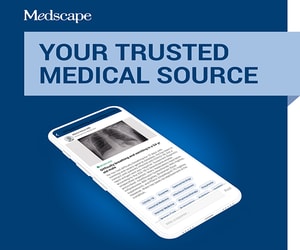Dec. 15, 2004 — The U.S. Food and Drug Administration (FDA) approved in September revisions to safety labeling to advise healthcare professionals of the following changes: use of fluoxetine hydrochloride may cause worsening of depression/suicidality; use of gatifloxacin or gemifloxacin mesylate may be linked to prolongation of the QTc interval, peripheral neuropathy, and tendon effects.
Fluoxetine (Sarafem) May Cause Worsening of Depression/Suicidality
On Sept. 3, the FDA approved revisions to the safety labeling for fluoxetine hydrochloride pulvules (Sarafem, made by Eli Lilly) to include the warning that adult and pediatric patients with major depressive disorder may be at risk of worsening depression and/or the emergence of suicidal ideation and behavior until significant remission occurs — regardless of whether antidepressants are being taken.
Although the causal role of antidepressants in inducing such behaviors has not been established, the FDA recommends that patients being treated with these medications be monitored carefully for clinical signs of worsening depression and suicidality, especially at the initiation of therapy and during dose changes.
The FDA notes that consideration should be given to changing or discontinuing the therapeutic regimen in patients with persistently worsening depression, or suicidality that is newly emergent, severe, or abrupt in onset.
This formulation of fluoxetine is indicated for the treatment of premenstrual dysphoric disorder (PMDD).
Gatifloxacin (Tequin) and Gemifloxacin (Factive) Associated With Prolonged QTc Interval, Peripheral Neuropathy, Tendon Effects
On Sept. 9 and 14, the FDA approved revisions to the safety labeling for gatifloxacin injection and tablets and gatifloxacin in 5% dextrose injection (Tequin, made by Bristol-Myers Squibb) and gemifloxacin mesylate tablets (Factive, made by Oscient), warning of the risk of prolonged QTc intervals on electrocardiogram (ECG), peripheral neuropathy, and tendon effects associated with their use.
Fluoroquinolones such as gatifloxacin and gemifloxacin have the potential to prolong the QTc interval of the ECG in some patients. This may lead to an increased risk for ventricular arrhythmias, including torsades de pointes. The FDA has received rare reports of torsades de pointes in patients receiving quinolone therapy, most of which were associated with one or more of the following factors: age older than 60 years, female sex, underlying cardiac disease, and/or use of multiple medications.
In clinical trials, no cardiovascular morbidity or mortality attributable to QTc prolongation occurred with gatifloxacin or gemifloxacin therapy. Each trial included patients with uncorrected hypokalemia and patients concurrently receiving drugs known to prolong the QTc interval.
The FDA recommends that use of quinolones be avoided in patients receiving class 1A (quinidine, procainamide) or class 3 (amiodarone, sotalol) antiarrhythmic agents. Gatifloxacin and gemifloxacin should be used with caution in patients concurrently receiving drugs known to prolong the QTc interval (cisapride, erythromycin, antipsychotics, and tricyclic antidepressants) and in patients with ongoing proarrhythmic conditions (clinically significant bradycardia, acute myocardial ischemia).
Because the magnitude of QTc prolongation increases with increasing concentrations of the drug, the FDA advises that recommended dose and intravenous infusion rates not be exceeded, particularly in renally impaired patients.
The FDA has also received rare postmarketing reports of sensory or sensorimotor axonal polyneuropathy affecting small and/or large axons and resulting in paresthesias, hypoesthesias, dysesthesias, and weakness in patients receiving quinolone therapy.
Gatifloxacin and gemifloxacin should be discontinued in patients experiencing symptoms of neuropathy, including pain, burning, tingling, numbness, and/or weakness, or having deficits in light touch, pain, temperature, position sense, vibratory sensation, and/or motor strength in order to prevent the development of an irreversible condition.
Ruptures of shoulder, hand, Achilles, and other tendons resulting in prolonged disability or requiring surgical repair have also been reported in patients receiving quinolone therapy. According to the FDA, the reports indicate that risk of tendon rupture may be increased in patients receiving concomitant steroids, particularly in those of advanced age.
The FDA advises that gatifloxacin and gemifloxacin should be discontinued in patients experiencing pain, inflammation, or tendon rupture. Patients should rest and refrain from exercise until tendonitis and tendon rupture have been excluded from the diagnosis.
Gatifloxacin and gemifloxacin are fluoroquinolone antibiotics indicated in the treatment of acute bacterial exacerbations of chronic bronchitis, and community acquired pneumonia caused by susceptible gram-negative and gram-positive bacterial strains. Gatifloxacin is also indicated in the treatment of acute sinusitis, skin and soft tissue infections, urinary tract infections, pyelonephritis, and gonorrhea.
Reviewed by Gary D. Vogin, MD
Medscape Medical News В© 2004 Medscape
Cite this: Yael Waknine. FDA Safety Labeling Changes: Sarafem, Tequin, Factive - Medscape - Dec 15, 2004.


Comments